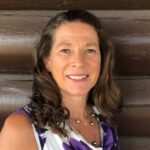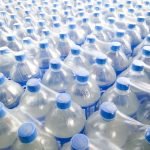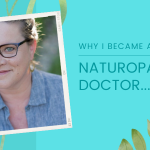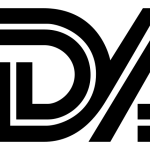JAMES SENSENIG, ND
LETITIA DICK-KRONENBERG, ND, VNMI
This column is transcribed from a weekly live conversation produced by the Naturopathic Medical Institute (NMI). The goal of NMI is to preserve and promote the principles of naturopathic philosophy through clinical application, in your offices and in your communities, every day. This lightly edited transcript (by Emily Kane, ND) is the first part of a 4-part conversation between Drs Jim Sensenig and Letitia Dick-Kronenberg, which took place on September 13, 2017.
Dr Sensenig: Today, Dr Dick-Kronenberg is going to talk about hydrotherapy. This is a fundamental tool for naturopathic physicians, which, sadly, is slipping out of our curricula. Today’s conversation is part of the didactic requirement for the Vitalist (VNMI) Certification process. Learn more at: www.NaturopathicMedicineInstitute.org.
Dr Dick-Kronenberg: This curriculum is something I’ve taught as adjunct faculty at Bastyr University for 23 years. It’s a 3-day intensive course, but it actually should be a full-semester course. So, even with that, just know that I’m paring that down even more during our 1-hour conversation.
Dr Sensenig: I think we should say that at Level One in the curriculum that we’re presenting [for NMI Vitalist Certification], with respect to hydrotherapy and all other topics, we are not aiming to confer any expertise, but rather to introduce everyone to these modalities and their use, and when they are indicated. The expertise comes later. But, one of the things we’re attempting to do with the Institute is create a class of naturopathic physicians that are on the same page; that have the same knowledge and same skill-sets; and can appreciate where and how all or each of the different modalities are used in conjunction and in synergy with the others.
Naturopathic Hydropathy
Dr Dick-Kronenberg: These lecture notes are also in my textbook, The Ultimate Text in Constitutional Hydrotherapy: A 100-year Tradition of Clinical Practice,1 which is listed on the NMI website. I self-published the book a number of years ago. All of the things I’m going to talk here about are in that textbook, but I’ll go through this bit by bit.
I want to start with the history. There is a difference between medical hydrology and naturopathic hydrotherapy, originally termed “hydropathy.” In looking at the historical books at NCNM’s library, and researching hydrotherapy for the foundation’s textbook, I realized that there was a divergence of hydrotherapy methods that was not defined when I was going to naturopathic medical school. It was always interesting to me that when I would approach my father, Dr Harold Dick, and say, “I learned also that there’s this other hydrotherapy,” he’d say, “That’s not what Dr Carroll did.”
The lineage is very different between the 2 types of hydrotherapy. Here’s a brief description of each:
- Medical hydrology treats the symptoms.
- Naturopathic hydropathy works on the emunctories and vital force.
So, they are very different approaches. It’s just good to know what you’re doing and why you’re doing it. There’s this thinking that hydrotherapy is so simple. Yes, it is – you can do this or that treatment – but you have to realize whether you’re treating a symptom or actually treating the vitality and the emunctories. My approach, the Carroll hydrotherapy, is naturopathic hydropathy… we’re hydropaths. Dr Carroll was a hydropath. It’s a little bit different approach.
Dr Sensenig: This is true for all of our modalities. It’s not what we do; it’s why we do it. That is the difference between allopathic medicine and naturopathic medicine. It’s the difference between suppressing or treating the symptoms and treating the underlying cause, which then manifests as those symptoms. Every naturopathic textbook that was written since the beginning of the 19th century – and even before, if we count some of the homeopathic literature – says that it’s not the modality or the technique; it’s how it’s used that makes a difference. Anything can be used allopathically, or in this case, naturopathically.
Historical Timeline
Dr Dick-Kronenberg: Medical hydrology is more the Seventh-Day Adventist hospital approach to hydrotherapy. Examples are the steam bath for the sinuses and the wet-sheet wrap. Those are medical hydropathies.
The naturopathic approach comes from Vincent Priessnitz. If you look at the historical flow sheet in the textbook by Andre Saine and Wade Boyle,2 it shows the history of this type of hydrotherapy. After starting with Priessnitz, it then goes to Sebastian Kneipp, and then Alex Ledoux, and then to Henry Lindlahr and Benedict Lust. From there, the history goes to Otis G. Carroll. Dr Carroll was a high school teacher. He also had juvenile rheumatoid arthritis. He went to Dr Ledoux and Dr Lindlahr and got the water-cure, which cured his arthritis. Then he became a student of Lindlahr in Lindlahr’s school. He later took the medicine west and set up a practice in Spokane, Washington.
This is the hydrotherapy track; this naturopathic hydropath came from the Priessnitz lineage with the heating compress. That’s a distinction, because the heating compress is not part of medical hydrology; it’s different than that and is what I’m going to be talking about today. This is how Dr Carroll learned this hydrotherapy. He was kind of controversial. He was considered one of the “mixers” at the time. Being an electrician, he taught electrical engineering. He took the new and upcoming electrical therapies, such as sine-wave currents and diathermy, which were coming on board. And he mixed those with the hydrotherapy treatment. He developed constitutional hydrotherapy – that was his creation.
After learning the water-cure therapy from Lindlahr, Dr Carroll modified the long, hot/cold contrast therapy into a concise 1-hour therapy that also incorporated the “new” electrical therapy of sine-wave current. Patients who would have normally come to Lindlahr’s sanatorium for weeks at a time could now get therapy in an hour and maintain their busy work or home schedule.
He called the treatment “constitutional hydrotherapy” because, as he explained, it actually changed the constitution of each cell, affecting the cellular metabolism at a very deep level to stimulate the vitality, and to stimulate nutrition and absorption and detoxification on a cellular level. I have seen remarkable results with thousands of patients through the years. Constitutional hydrotherapy has a 100-year tradition. When people ask, “Do you have any research?” I can answer, “We’ve got 100 years of clinical outcomes here. Yes, there is research.”
There is a historical flow chart in my textbook that is the same flow chart I mentioned being in the textbook by Andre Saine and Wade Boyle: Lectures in Naturopathic Hydrotherapy.2 I want to bring attention to this book. It was written from notes that Dr Andre Saine took from Dr Leo Scott and my father. Dr Scott also practiced with Dr Carroll for a short time. The book is antiquated, being written in 1988, and it contains inconsistencies and inaccuracies. Unfortunately, most of the naturopathic schools are using that book as their hydrotherapy text. It needs to be updated and corrected.
I would make some corrections to it. For example, pregnancy is listed as a contraindication for hydrotherapy. That’s not true. I use constitutional hydrotherapy all the time in pregnancy. In fact, there is a protocol for it. The book also lists cystitis as a contraindication. Again, not true. Ditto for cancer and pneumonia. Where those beliefs came from, and why that got put in the textbook, we have no idea. There are some problems with that text. Just keep that in mind.
I always start off my lecture with some wonderful quotes from the book Nature Doctors, by Friedhelm Kirchfeld and Wade Boyle,3 because it really sets the tone for the hydrotherapy – and why we work with the whole person, with their vitality. It’s part of determining the vitality of the patient. That’s not something currently taught at our medical schools. But that’s the art of the medicine – to determine the vitality of the patient.
Here are some of the quotes from that book:
(Sebastian Kneipp): For 30 years, I tried every single application upon myself. Three times this I acknowledge openly. I found myself induced to change my system from great to so greater softness. According to my present conviction, now fixed for 17 years, and tested by innumerable cures, he who knows how to apply the water in the plainest, easiest, and most simple way, will produce most profitable results.
It really is simple. Hydrotherapy is simple, but it’s also deep and effective.
(Louis Kuhne): In fact, I consider the whole scheme of poisoning patients by medicine, lately so decidedly on the increase, as one, if not the chief cause, that thoroughly healthy persons are now hardly to be found. Chronic diseases are multiplying with fearful rapidity. The proper and timely intervention of the new art of healing will render surgery almost wholly superfluous.
This was written in the late 1800s, when this doctor already saw that the toxemia was getting worse.
(Louisa Lust): When there is fever of any kind, the vital force is trying to get rid of the poisons. Give the patient an enema of lukewarm water and a tea of rhubarb powder once daily. No solid food whatsoever. Give the patient the ablution of cool water every hour. Normal functions of the organs will take place and the fever will stop. It is the poisons and the toxins in the system, and the foolish medicines which kill – not the fever. Fever should never be suppressed.
(Joe Boucher): The essence of all disease is the accumulation in the system of waste matter, impurities due to wrong habits of living. The elimination of this toxic matter from the body is what nature is striving for all the time. It’s through detoxification that the healing latent within all of us can be given a free chance to function.
That’s what the hydrotherapy is doing: it’s detoxifying on a cellular level.
(John Bastyr): At a conference in 1985, Dr Bastyr was asked to distinguish the difference between naturopathy and conventional medicine: Very succinctly, the basic difference is that in naturopathy it’s not the doctor that does the curing; it’s the patient.
That’s very true – patients have to heal themselves. Think about what makes us naturopaths. What makes us uniquely naturopathic is…
- The way we utilize our therapeutics, based upon a model of healing, not on a model of disease.
- The way we teach our patients sustainable health, not dependent on the next drug, which is more toxic or addictive.
- By believing in the vital force. The laws of nature are constant and ever-present. They don’t change.
- Knowing that we remove the disturbance to cure and support the elimination process using the vital force.
You can hang your hat on these 4 principles. You know how the body reacts to certain things, how the fever works; you know these things; you can work with them. These are fundamentals that make us naturopaths.
Dr Sensenig: Spitler points out over and over again in his text, Basic Naturopathy,4 “It’s not the medicine, or the intervention, that is curative. It’s the body’s reaction to it that’s curative.” Adolf Just said something like that as well: that it’s not the water – in this case – but the body’s reaction to it. What we are talking about is getting to cellular cleansing and the healing that naturally ensues. We’re not directing anything. We’re evoking a reaction by the patient, or with the patient. That quote by Bastyr should be a mantra of ours: “It’s not the doctor that does the curing; it’s the patient.”
This column, based on the Vital Conversations of the Naturopathic Medicine Institute, will continue in next month’s NDNR.

James Sensenig, ND was a 1978 graduate of NCNM in Portland, OR. For over 40 years he maintained an eclectic practice in Hamden, CT. Over the years, Dr Sensenig held prominent positions in the various naturopathic colleges and the AANP. A champion of classical naturopathic medicine, Dr Sensenig received an Honorary Doctor of Naturopathic Philosophy degree from CCNM, and received numerous awards for his dedication to teaching the principles of naturopathic medicine.

Letitia Dick-Kronenberg, ND, VNMI earned her doctorate in Naturopathic Medicine in 1990 from NCNM. She then completed a 3-year residency with her late father, Dr Harold Dick. After his passing, she continued his classical naturopathic clinic in Spokane, WA, now over 60 years old. Dr Letitia has been in practice 31 years; is past adjunct faculty at Bastyr University; co-founder of the Carroll Institute of Natural Healing (a non-profit, post-graduate institute teaching the healing methods of Dr Otis G. Carroll); author of The Ultimate Text In Constitutional Hydrotherapy: A 100 Year Tradition of Clinical Practice; founder and senior Vitalist of the NMI; and an international speaker / medical educator.




